A significant drawback of 3D printing at a hobbyist scale is the incapacity to print metal. There are indeed commercial 3D printers capable of printing metals, including unique types like Inconel. However, the expense of these 3D printers only allows for usage in the most upscale applications due to their high cost.
What's a poor 3D printing hobbyist to do about metal?
One great answer is to use their 3D Printer to create the models that are to be used to cast the part from metal using the lost wax casting technique (known more formally as investment casting). With lost wax, one makes a full size replica of the desired part. That replica is then embedded in a material capable of withstanding the high temperatures of the molten metal to be used for the part. That result is then placed in a kiln where the model (normally wax, but in this case 3D printed plastic) is "burned out" of the mold. It is literally burnt away leaving behind a void shaped exactly like the desired part. Next, molten metal is poured into this new mold to case the part. The material is chipped or washed away and Voila! A new part is born.
Here are some really nice examples of this technique, done with varying degrees of sophistication:
Carbon Fiber Bicycle Frame
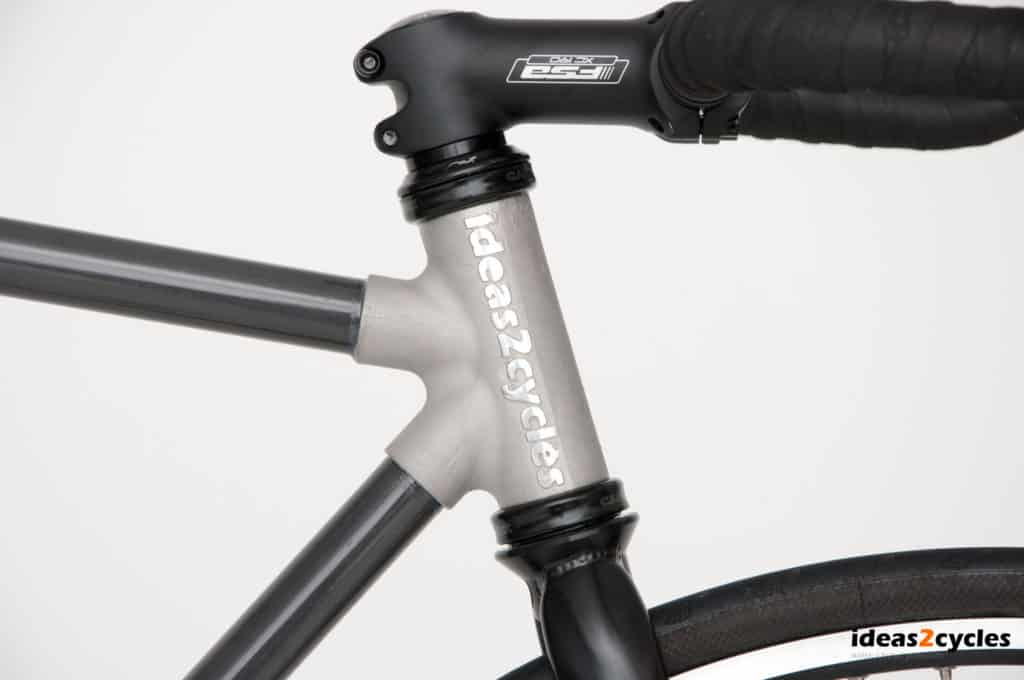
Cast magnesium connector for carbon fiber tube frame on a bike...
Imagine a super light bicycle frame consisting of carbon fiber tubes joined by connectors made of cast magnesium. Magnesium is extremely light-34% lighter than aluminum by volume and 50% lighter than titanium. It's been used for such weight critical applications as Porsche engine blocks. It's pretty exotic stuff and as most people know it can catch fire and burn with a vengeance. Casting it is no easy matter, but I love the video of Ideas2Cycles work to create the cast magnesium connectors for their special bike:
Here are the 3D Printed models used for the casting:
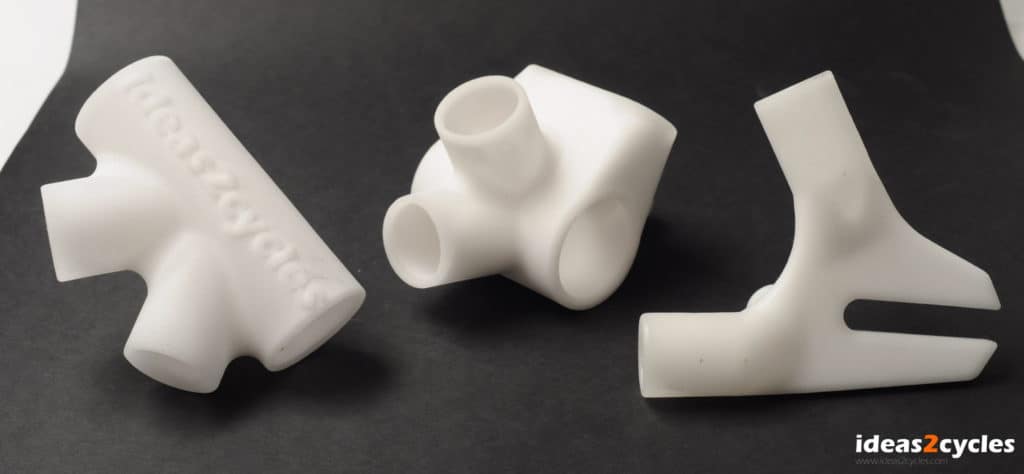
3D Printed Models for casting...
The video is filled with interesting information on how to create high quality castings for a project like this. For example, they used an inert gas (probably Argon) to cover the magnesium and keep it from igniting.
Casting, BTW, involves heat, molten metal that can splash, and all sorts of other really nasty hazards. Don't attempt it unless you really know what you're doing!
Casting an Aluminum Ballnut Mount for a CNC Project
Here's one a lot of us with CNC Milling Machines would've just jumped on with the mill and gotten it done. But what if you need a part for the CNC Mill you haven't yet finished building and you have no other mill? Well, if you've got a 3D Printer and a small DIY aluminum forge, you are in luck.
Check out this project:
[/youtube]
3DTopo has a web page that provides a lot of detail on the process of taking a 3D Printed PLA model and casting the aluminum part from it. The part is a focusing lens mounting for a 150W CNC Laser (interesting project all by itself!). There are some great tips. For example, you'll note that a lot of these use soft drinks cans or other mechanisms to create a "pouring column" that stands up pretty high from the part. The magnesium bicycle parts use a very high pour column for this. They're trying to create as much head pressure as possible to use gravity to help make sure the pour fills the model void as well as possible and to keep things molten (thermal mass) until that process is complete.
Lost Wax Casting With a Form 1 SLA 3D Printer
Castings can be a little rough sometimes, often due to the texture of the mold material. But for some applications such as jewelry, you want the best finish possible right out of the mold. One of the challenges for that is going to be creating a very clean 3D model to start from. Using a higher resolution printer such as the Form 1 3D Printer is a great start.
Check these photos from the Form 1 user forum that show some of the results that are possible for jewelry makers:
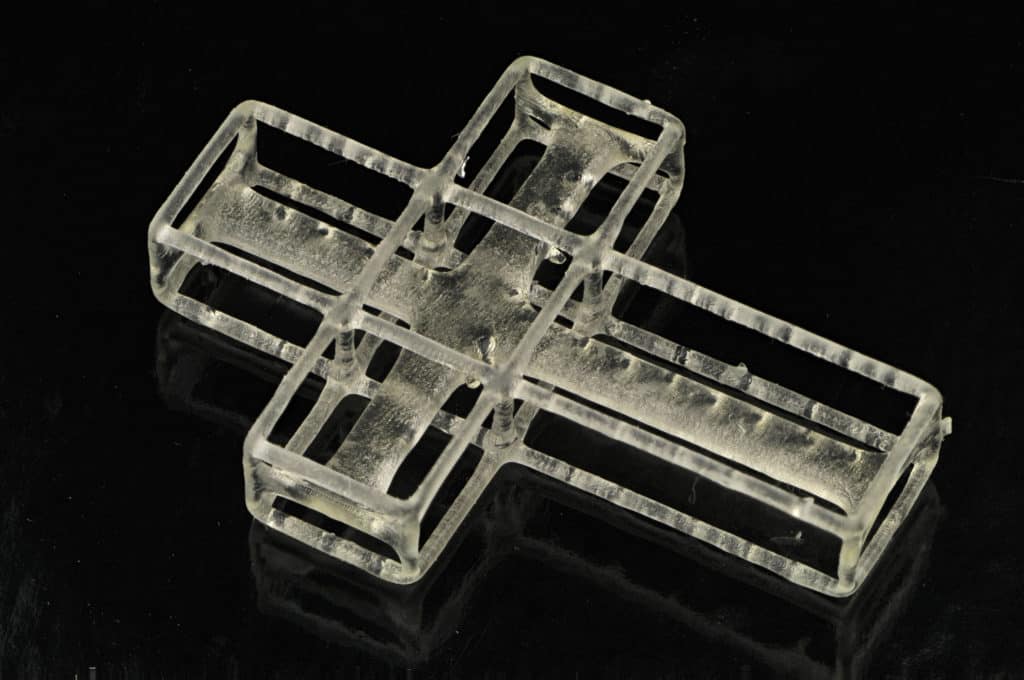
Clear Resin model of a suspended cross...
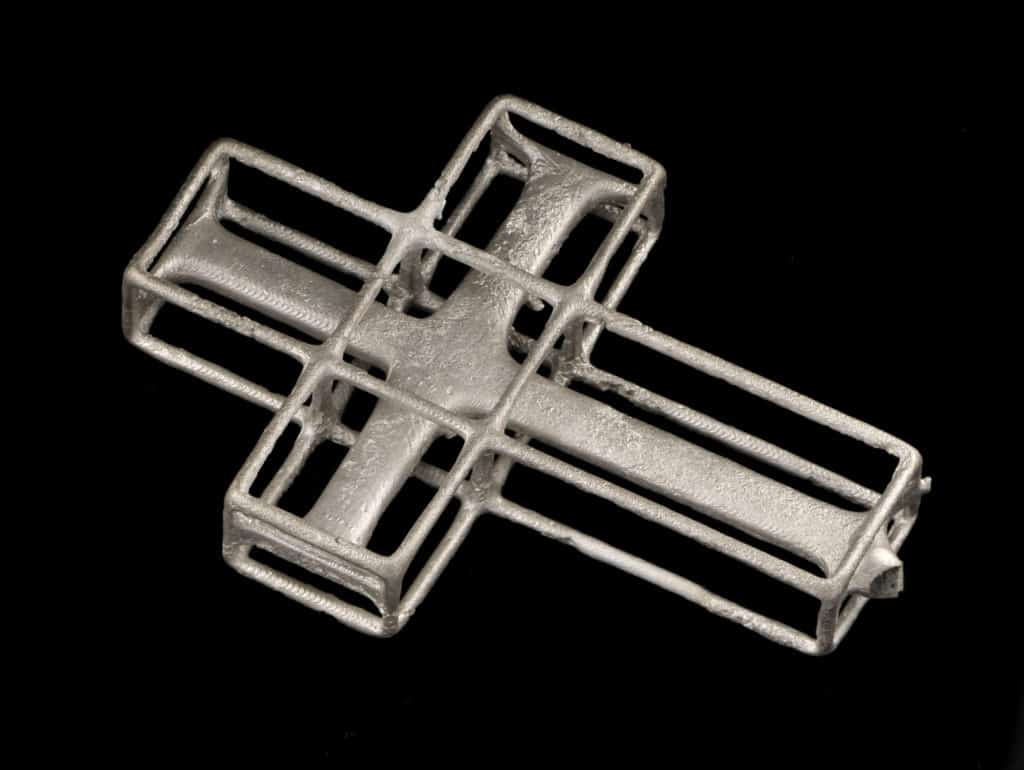
The cross, now casted...
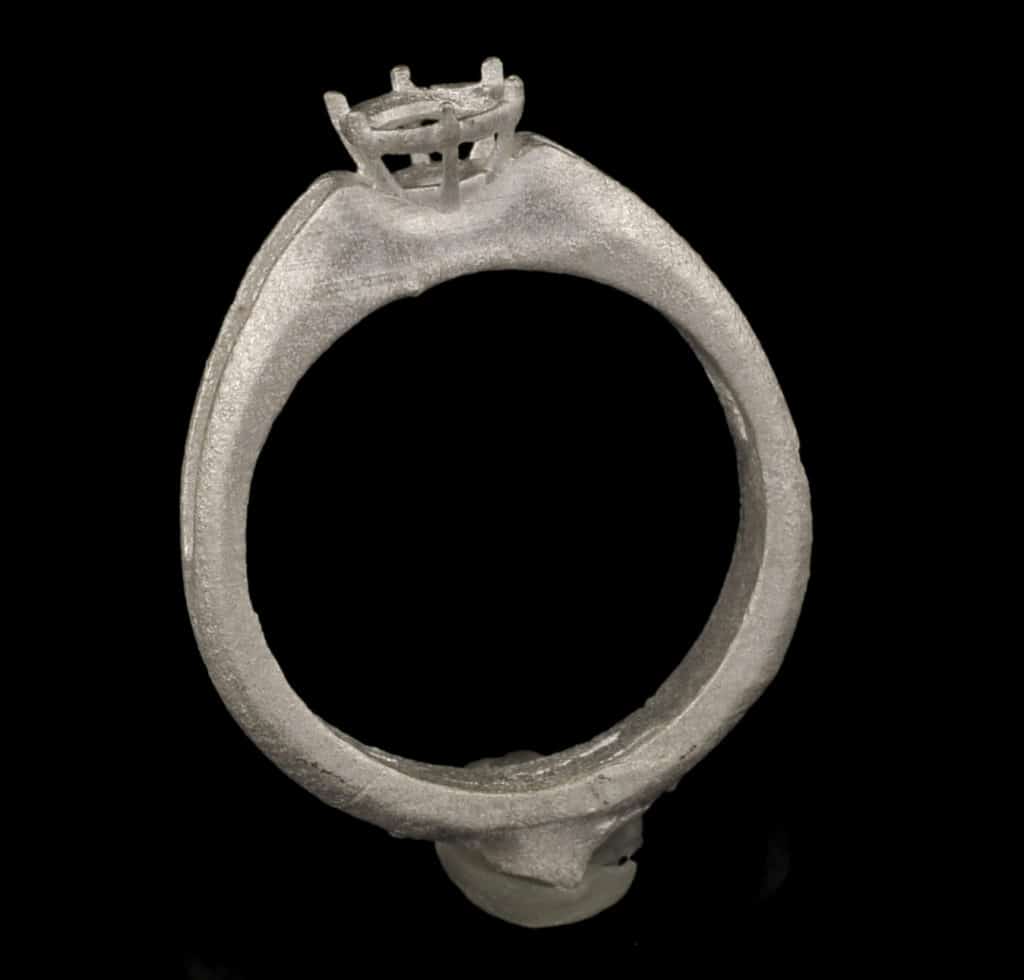
A ring...
High Quality Jewelry via Shapeways
There are 3D printers purpose-built for the custom jewelry industry, even some that work with wax. But the Form 1 is a more affordable alternative that can produce good results. However, you don't have to be able to buy your own high-end 3D printer to get great results. You can contact a service bureau like Shapeways and let them create your design for you. They'll even do the polishing for you at a little extra cost.
I'm a scuba diver and love all sea critters, large and small. How about an octopus ring like this one:
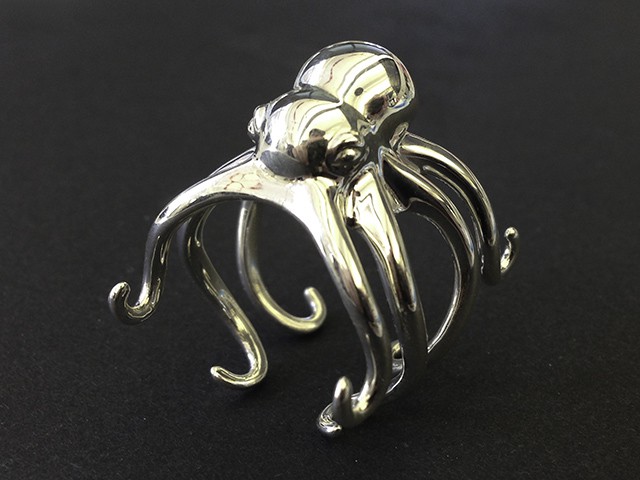
Octopus ring by Museum of Small Things...
Not only that, but you can list your designs on Shapeways for resale. With a little help from a service like this, you can design items at home, print the prototypes on your 3D printer to get a real feel for how the 3D object will turn out, and then have them printed in metal at a reasonable cost.
Conclusion
Quite a lot can be done with a 3D Printer and metal given an ability to cast metal or to use a service like Shapeways. When you get tired of sticking to plastic, try some metal and see what you think. Just be careful if you're going to do some casting yourself. As I mention, casting can be a dangerous process. Fortunately, a lot of folks are interested in jewelry making, so there is likely a course available to you at a nearby community college that can show you the ropes. Perhaps they even offer a 3D printing version of the course.
Be the first to know about updates at CNC Cookbook
Join our newsletter to get updates on what's next at CNC Cookbook.